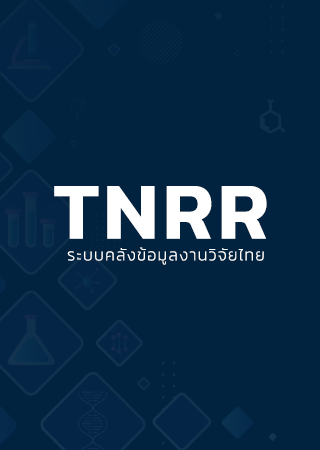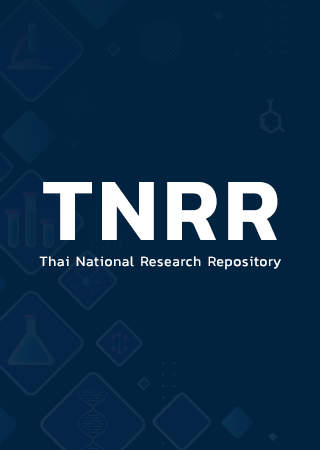ศาสนาพราหมณ์ ฮินดูบริเวณลุ่มน้ำทะเลสาบสงขลา

โดย ชัยวุฒิ พิยะกูล
หมวดหมู่
รายงานการวิจัย
ประเภทสื่อ
eBook
0
(0 รีวิว)
จำนวนคงเหลือ
:
Share
รายละเอียด
งานวิจัยนี้เป็นการศึกษาเรื่อง ศาสนาพราหมณ์-ฮินดู บริเวณลุ่มน้ำทะเลสาบสงขลา โดย
มีวัตถุประสงค์เพื่อศึกษาพัฒนาการของศาสนาพราหมณ์-ฮินดู ประเพณีและพิธีกรรมของพราหมณ์ และอิทธิพลของศาสนาพราหมณ์-ฮินดู การวิจัยครั้งนี้เป็นการวิจัยเชิงคุณภาพที่ใช้ข้อมูลจากเอกสารข้อมูล
โบราณวัตถุสถาน ข้อมูลจากการสัมภาษณ์และสังเกต ผลการวิจัยสรุปได้ดังนี้
ศาสนาพราหมณ์-ฮินดู ได้เริ่มเข้ามาเผยแพร่ครั้งแรกบริเวณคาบสมุทรสทิงพระ ตั้งแต่พุทธศตวรรษที่ ๑๒ แบ่งออกเป็น ๒ นิกาย ได้แก่ ไศวนิกาย (บูชาพระศิวะ) และไวษณพนิกาย (บูชาพระนารายณ์) โดยมีเทวสถานถ้ำขุดเขาคูหา อำเภอสทิงพระ จังหวัดสงขลา เป็นศูนย์กลางของศาสนา แต่หลังพุทธศตวรรษที่ ๑๘ ศาสนาพราหมณ์-ฮินดู ได้ขยายตัวไปทางฝั่งตะวันตกของทะเลสาบสงขลา พร้อมกับการเกิดเมืองพัทลุงขึ้นบริเวณใกล้เคียงกับวัดเขียนบางแก้ว ประมาณพุทธศตวรรษที่ ๑๙-๒๐ ทำให้กลุ่มพราหมณ์มีบทบาทสำคัญในการประกอบพิธีกรรมให้บ้านเมือง เช่น พิธีถือน้ำพระพิพัฒน์สัตยา พิธีเสียเคราะห์เมือง พิธีแรกนาขวัญ เป็นต้น แต่หลังจากมีการเปลี่ยนแปลงการปกครองจากระบอบสมบูรณาญาสิทธิราชเป็นระบอบประชาธิปไตย พ.ศ. ๒๔๗๕ พราหมณ์พัทลุงได้หันไปประกอบพิธีกรรมให้ชาวบ้านมากขึ้น เช่น พิธีสวดบ้าน พิธีสวดวัด พิธีรดน้ำสังข์คู่บ่าวสาว เป็นต้น ส่วนประเพณีและพิธีกรรมที่เกี่ยวเนื่องกับศาสนาพราหมณ์-ฮินดู ที่พราหมณ์พัทลุงได้ปฏิบัติสืบต่อกันมา ได้แก่ ประเพณีทำบุญข้าวเม่าหรือประเพณีทำบุญปีใหม่ ตรงกับวันขึ้น ๑ ค่ำเดือน ๔ ของทุกปี ประเพณีบวชพราหมณ์ พิธีกรรมสรงน้ำเทวรูป พิธีกรรมตักบาตรใบบัว ประเพณีงานศพ นอกจากนี้ศาสนาพราหมณ์-ฮินดู ได้เข้ามามีอิทธิพลในวิถีชีวิตของผู้คนบริเวณลุ่มน้ำทะเลสาบสงขลาในด้านต่าง ๆ มากมายจนกลายเป็นวัฒนธรรมท้องถิ่น เช่น อิทธิพลทางด้านศิลปกรรม อิทธิพลทางด้านวรรณกรรม อิทธิพลทางด้านพุทธาคมและไสยเวท อิทธิพลทางด้านการแสดงหนังตะลุงและโนรา อิทธิพลทางด้านประเพณีและพิธีกรรม
เป็นต้น
The purpose of this was to study development of Brahmanism - Hinduism in terms of traditions and rituals and its influences. This qualitative research utilized information from documents and historical objects and interviews and observations. The findings of the study reveal the following. The two sects of Brahmanism - Hinduism entering Satthingphra Basin since the 12th Buddhist Century were the Shiva, Which revere the Shiva god and the Vishnav, which revere the Vishnu god. Traces of Hindu temples are found in Tham Khood cave of Khao Khooha hill in Sathing Phra District, Songkhla Province, serving as the center for Brahmanism - Hinduism. After the 18th Buddhist century, Brahmanism - Hinduism spread to the west coast of Songkhla Lake along with the establishment of new settlement, phatthalung, around Wat Khian Bang Kaeo During the 19th - 20th Buddhist century, resulting in increasing influences of Hinduism in rites and rituals in offcial/royal ceremonies, such as Phithi Thue Nam phra Phiphat sattaya, Phithi Sai Khorh Muang, Phithi Reak Na Khwan etc. However, after a political change from the absolute monarchy to the democratic system in B.E 2475, Brahman in Phatthalung played more eminently significant roles in performing domestic ceremonies to local people, such as phithi Suad Ban phithi Suad Wat, Phithi Rodnamsang to bride and groom at marriage ceremony, etc. The customs and rituals related to Buahmanism - Hinduism practiced by Brahman in Phatthalung are Thamboon Khao Mao or Thamboom Pi Mai, which falls on the of the fourth lunar month of each year. In addition, there are other rituals such as Buad Phram,Phithi song Nam Thevaroop, phithi Takbat Baibua and funeral ceremony. Brahmanism - Hinduism has penetrated the way of lives of the people in Songkhla Lake Basin in various aspects until they have transformed in to local cultures such as in arts, literature, Bhuddakhom and Saiyavate (superstitions) shadow puppet entertainment and Manora performance and in traditions and rituals
The purpose of this was to study development of Brahmanism - Hinduism in terms of traditions and rituals and its influences. This qualitative research utilized information from documents and historical objects and interviews and observations. The findings of the study reveal the following. The two sects of Brahmanism - Hinduism entering Satthingphra Basin since the 12th Buddhist Century were the Shiva, Which revere the Shiva god and the Vishnav, which revere the Vishnu god. Traces of Hindu temples are found in Tham Khood cave of Khao Khooha hill in Sathing Phra District, Songkhla Province, serving as the center for Brahmanism - Hinduism. After the 18th Buddhist century, Brahmanism - Hinduism spread to the west coast of Songkhla Lake along with the establishment of new settlement, phatthalung, around Wat Khian Bang Kaeo During the 19th - 20th Buddhist century, resulting in increasing influences of Hinduism in rites and rituals in offcial/royal ceremonies, such as Phithi Thue Nam phra Phiphat sattaya, Phithi Sai Khorh Muang, Phithi Reak Na Khwan etc. However, after a political change from the absolute monarchy to the democratic system in B.E 2475, Brahman in Phatthalung played more eminently significant roles in performing domestic ceremonies to local people, such as phithi Suad Ban phithi Suad Wat, Phithi Rodnamsang to bride and groom at marriage ceremony, etc. The customs and rituals related to Buahmanism - Hinduism practiced by Brahman in Phatthalung are Thamboon Khao Mao or Thamboom Pi Mai, which falls on the of the fourth lunar month of each year. In addition, there are other rituals such as Buad Phram,Phithi song Nam Thevaroop, phithi Takbat Baibua and funeral ceremony. Brahmanism - Hinduism has penetrated the way of lives of the people in Songkhla Lake Basin in various aspects until they have transformed in to local cultures such as in arts, literature, Bhuddakhom and Saiyavate (superstitions) shadow puppet entertainment and Manora performance and in traditions and rituals
ข้อมูลเพิ่มเติม
| วันที่เผยแพร่ | 09/2021 |
| สำนักพิมพ์ | สถาบันทักษิณคดีศึกษา มหาวิทยาลัยทักษิณ, |
| หมวดหมู่ | รายงานการวิจัย |
| จำนวนหน้า | 77012 |
People Who Read This Also Read
รีวิว

